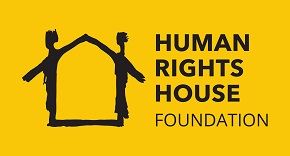Lasha Gogidze and Caitlin Ryan
Transparency International – Georgia
Housing for displaced persons featured prominently in President Saakashvili’s February 11th State of the Nation address and in the following speeches made by MPs Giorgi Akhvlediani (Christian Democrats) and Paata Davitaia (By Ourselves). Among a list of accomplishments made in 2010, the President said the following:
“We are in the process of moving IDPs from illegal to legal status. It is our obligation to resettle people in their own private homes, instead of in shelters. Around 25,000 IDP families already have property in private ownership. Within the next 12 months we will renovate all collective centers throughout Georgia. IDPs evicted have been resettled to the developing and industrial areas like Poti, Batumi, Tskaltubo and Anaklia.”
Let’s break this down and put it into some context:
Mikheil Saakashvili: “We are in the process of moving IDPs from illegal to legal status. It is our obligation to resettle people in their own private homes, instead of in shelters.”
“Moving IDPs from illegal to legal status” is a euphemism for eviction. Between August 2010 and January 2011 a total of 1,198 families were evicted from temporary shelters, according to data provided by the Ministry of Internally Displaced Persons from the Occupied Territories, Refugees and Accommodation (MRA). The country’s total IDP population is estimated at some 251,000 people, or 88,000 families.
Of the 534 families evicted in January, approximately two thirds were “old caseload” families, and 60 percent of this group are registered at other addresses in Tbilisi (collective centers or private accommodation), according to the MRA.
Many of those evicted in January were offered alternative accommodation outside of the capital, but only 21 families agreed to move to other state-provided housing. What became of the families who did not accept offers of alternative accommodation is anyone's guess. It is likely that the “legality” issue has not been completely resolved, but simply shifted from known locations to unknown.
Mikheil Saakashvili: “Around 25,000 IDP families have received property in private ownership.”
If this data is correct, the President’s statement implies that very little progress in providing durable housing to IDPs was made in 2010 compared to 2009. A July 2010 report (citing January 2010 data) by the Ombudsman’s office states that housing for approximately 23,000 IDP families was provided by the end of 2009. The figure includes 15,000 “first wave” IDP families and 8,000 “second wave” families.
The MRA also recently reportedthat 278 collective centers in Tbilisi, home to more than 10,000 families, have been “self-privatized”, i.e. first-wave IDPs have been given ownership of the apartments they occupy. It is unclear whether all 278 collective centers have been fully self-privatized, as some families rejected initial offers. A common reason for rejecting the self-privatization offer is that the space is not large enough. While these families are protected from eviction and their right to “choose” is upheld by the State Strategy and Action Planon IDPs, it is unclear what alternative options are available to them.
Mikheil Saakashvili: “Within the next 12 months we will renovate all collective centers throughout Georgia.”
This is not true. While many collective centers have already been renovated throughout Georgia, the government’s housing strategy explicitly excludes collective centers in Tbilisi from renovation. Approximately one third of all collective centers in Georgia are located in the capital. Government officials have provided a number of explanations for this approach: the physical state of collective centers outside the capital is generally much worse, property in Tbilisi has a higher market and resale value, and limited funding cannot cover renovation of every collective center.
Between January 2009 and September 2010, a total of 7,653 apartments were renovated for the first wave of IDPs: 7,241 units by the Municipal Development Fund (MDF,data current through September 2010) and 412 units by UNHCR and its partners (data current through April 2010). The total cost of these renovations is GEL 95.6 million - more than 95 percent of the costs was managed by MDF, with the remainder managed by international aid agencies and NGOs, led by UNHCR. Most of the funding for these projects came through the European Union’s Instrument for Stability programme.
According to the Civil Registry there are approximately 1,600 collective centers throughout the country including more than 500 in Tbilisi. They range in size from large apartment blocks of hundreds of families to small individual dwellings of one or two families. Most but not all are owned by the state. Forty percent of first-wave IDPs live in collective centers. Last week the MRA reported that so far, 598 buildings have been designated for durable housing - enough for 23,268 IDP families.
The quality of the renovations has also been called into question by a1,600 collective centers , with the biggest problems reported tied to water leakages in already-renovated buildings.
Mikheil Saakashvili: “IDPs evicted have been resettled to development and industrial areas like Poti, Batumi, Tskaltubo, Anaklia.”
The problem with this statement is the verb tense. So far, IDPs have not been resettled to any of the areas of high growth and investment listed by the President, although construction of new apartment blocks for IDP resettlement is currently underway in Poti and Tskaltubo. Together, the investments (also funded by the European Union) amount to GEL 44.2 million and will produce 1,520 apartment units.
So far, evicted IDPs have been resettled to areas without much investment or growth potential. The 21 families who did accept a relocation offer after the January 2011 evictions ended up in Tsintskaro, Bakurstikhe, Lagodekhi and Gardabani - all areas with little state investment. IDPs evicted in August 2010 were sent to Potskho-Etseri, an isolated block of apartments without any town/village infrastructure or services.
Giorgi Akhvlediani, Christian Democrats (summary of comments related to IDPs): An IDP family received monetary compensation of USD 10,000 from the government but they could not withdraw the money because the government had taken it back. More than 1,000 IDP families who were promised compensation were later denied it.
According to the MRA, only 17 families evicted since August 2010 were denied monetary compensation: six did not properly complete the application and the remaining 11 requested more than USD 10,000.
However, one of the most common criticisms regarding the government’s IDP housing policies has centered on accusations of corruption in the distribution of this USD 10,000 assistance. These concerns are reflected in Akhvlediani’s speech.
Informally, the MRA has given a general explanation for the way in which it distributes this one-time cash assistance: it is meant as a supplement to families with some savings already, so that they can purchase an apartment or house. But the Ministry has failed to share the specific eligibility criteria for this cash assistance.
Paata Davitaia, By Ourselves (summary of comments related to IDPs): More than 90 percent of IDPs evicted from Zubalashvili Street did not accept the offer from the government. In addition, according to the Civil Registry data of February 2, only 7,260 IDP families have property in private ownership (not 25,000 as the President reports); and only 1,400 new IDP families have received agricultural land plots in private ownership.
Data from the MRA confirms that resettlement acceptance is low. Out of 53 families evicted from Zubalashvili Street in January 2011, ten were offered resettlement and only one family accepted. Exactly 90 percent of IDPs from the Zubalashvili temporary shelter did not accept a resettlement offer.
What about the contradiction between the figures Davitaia provides on property ownership and the figures provided by the President? We think the difference is due to counting methods and that both figures are, in fact, correct. If Saakashvili took his data from the MRA, which likely counts the number of self-privatization contracts signed with IDPs, then the figure of 25,000 may be accurate. But many IDPs complain that although they have signed self-privatization contracts, they have not received proper ownership documents - they are in an ownership limbo. The Civil Registry would only be able to provide data on registered property, which is why the figures Davitaia cites are so low. It is unclear why so many privatization contracts have not yet been registered and formal property ownership transferred to IDPs.
IDP housing issues and evictions also took center stage during Parliament’s first plenary session on February 8.
this article was originally published by TI Georgia on February 28
Click here to access the original: http://www.transparency.ge/en/blog/pfact-checking-state-nation-address-idpsp




